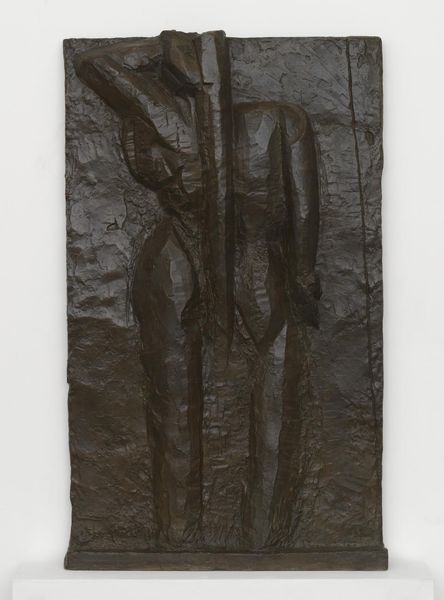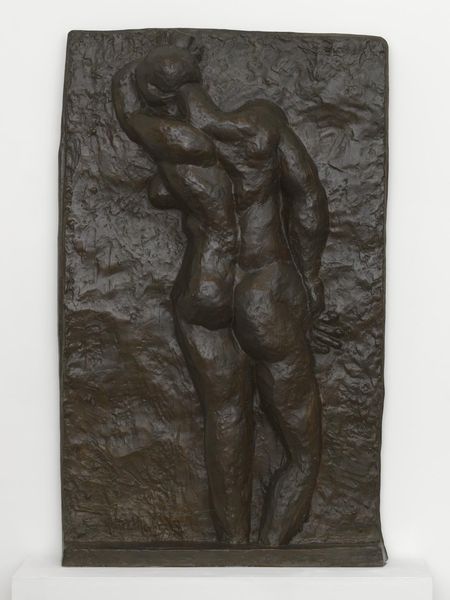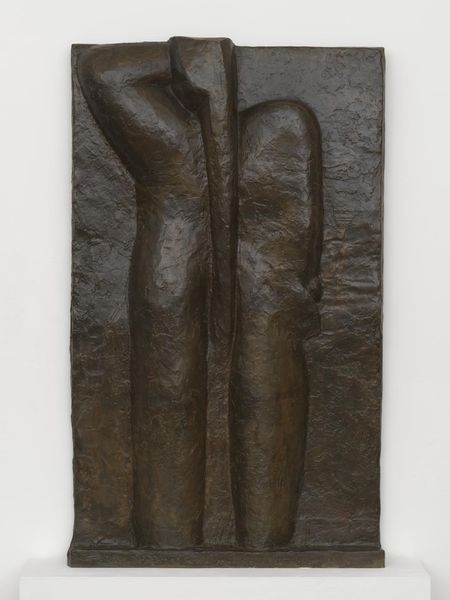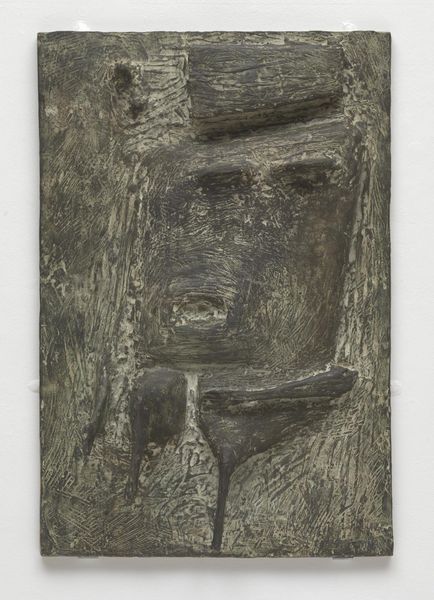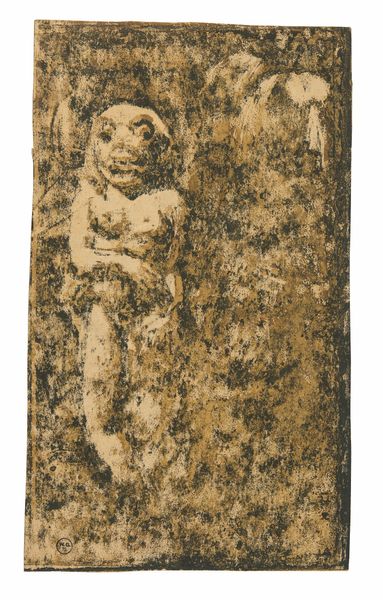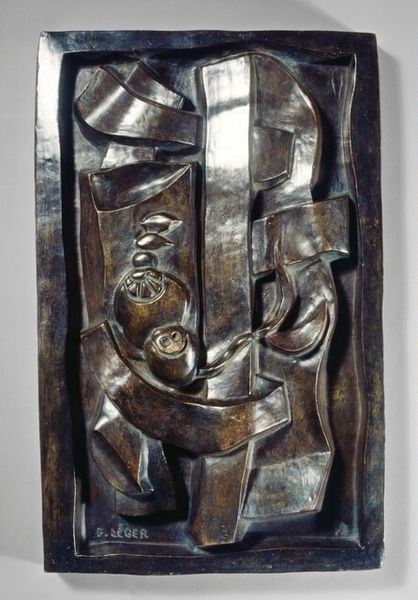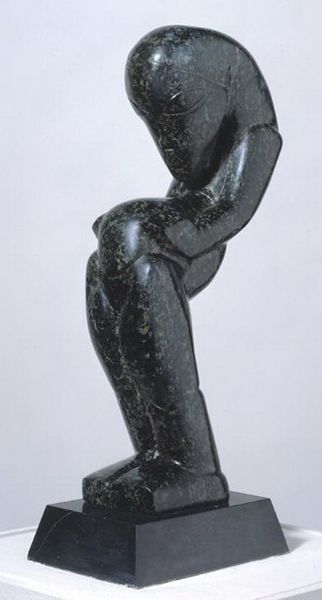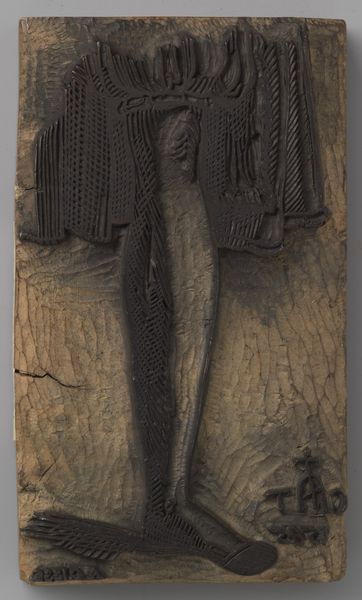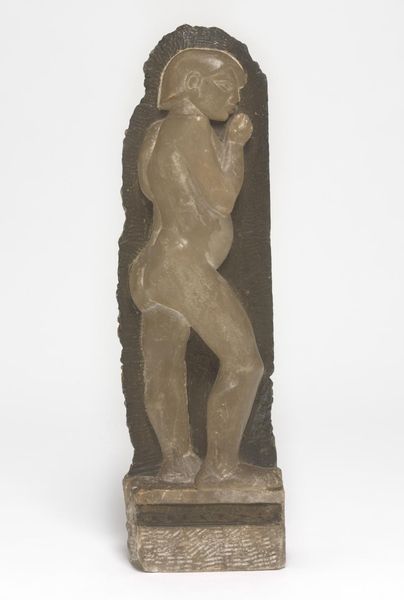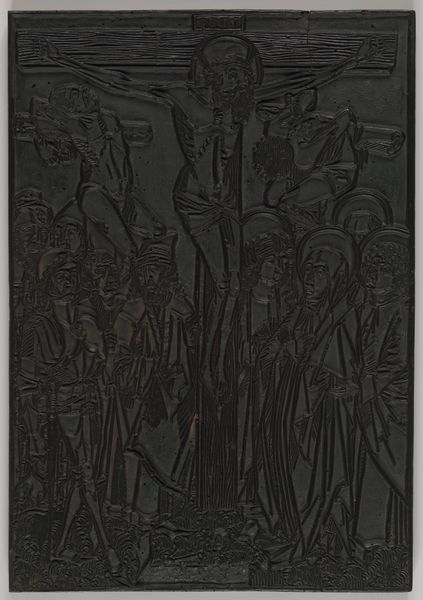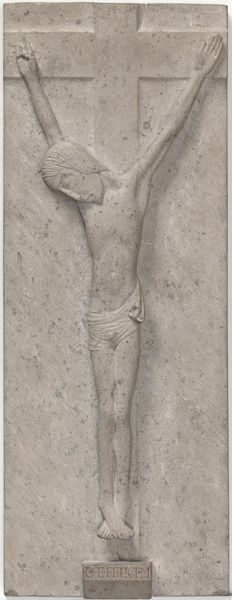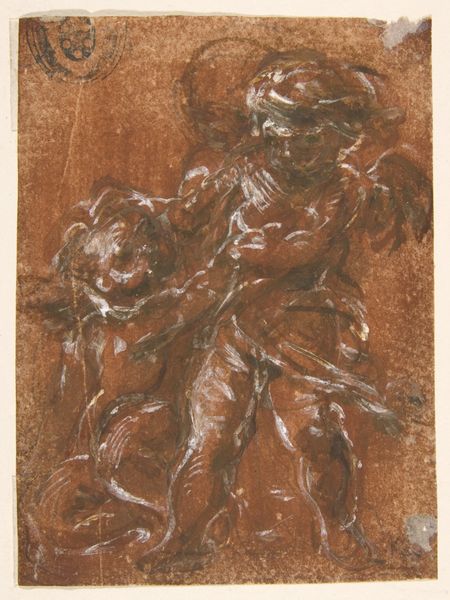
Dimensions: object: 1892 x 1206 x 190 mm
Copyright: © Succession Henri Matisse/DACS 2014 | CC-BY-NC-ND 4.0 DEED, Photo: Tate
Editor: Here we have Henri Matisse’s sculpture, "Back II," housed at the Tate. It’s a bronze relief of a female figure, quite imposing in its scale. It feels very classical, yet also modern. What strikes you about this piece? Curator: Consider the historical context. Matisse was working during a time of great social change, and the female nude was a contested subject. How does this sculpture, with its simplified forms, both engage with and challenge traditional representations of women in art? It's interesting how it reflects the changing societal views on the female form. Editor: That's a great point, I hadn't thought about how societal shifts influenced the piece. Curator: And note how museums, by choosing to display works like this, shape our understanding of art history. They play an important role in the art world. Editor: I see how that works, museums giving value to certain art pieces, influencing us to think the same. Thanks for pointing that out!
Comments
Join the conversation
Join millions of artists and users on Artera today and experience the ultimate creative platform.
tate 8 months ago
⋮
The Backs were Matisse’s largest sculptures. Over twenty years he progressively refined the original pose, based on a woman leaning on a fence, until he achieved a massive simplicity. Matisse’s decision to show the back view of a woman on such a monumental scale was unorthodox. By concealing her face, he avoided the complexities of visual engagement between artist and model. This helped him to consider the nude as an arrangement of forms that he could simplify and stylise. In the final sculpture, the modelling of flesh has given way to the massing of androgynous bulk and the gently curved spine has been replaced by an abstracted plait. Although Back I had been exhibited in 1913, the series remained almost unknown until 1949–50 when the plaster Backs I, III and IV appeared in exhibitions in Paris and Lausanne. Back II was only rediscovered after Matisse’s death, while an even more naturalistic first version is now only known from a photograph. All were cast in bronze after his death. Gallery label, October 2016
